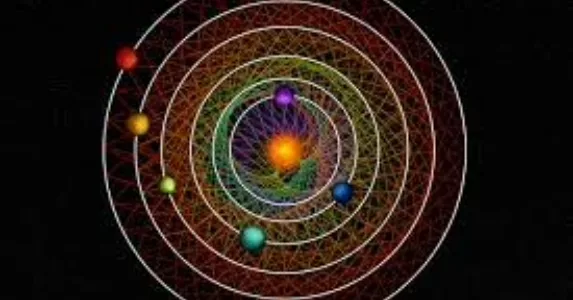
Planetary ballet of solar system HD110067’s reveals six planets orbiting sun-like star
In a groundbreaking revelation, researchers have unveiled a celestial marvel that is a mere 100 light years away. The marvel in question is a solar system, HD110067, which may provide deeper insights into the formation and evolution of different planets, amongst other questions. The solar system was located by a group of researchers, who have since published their research in “Nature.” The research paper has been authored by more than 150 scientists from 12 nations.
In stark contrast to the violent clashes and disturbances that characterized the birth of our solar system, HD110067 presents a scene of undisturbed tranquility. This remarkable system, existing for an astounding 12 billion years, comprises six planets that have maintained their original composition—a longevity seldom witnessed in the tumultuous narrative of planetary evolution – and may thus prove to be a treasure trove of information, data, and groundbreaking findings. It seems that the first couple planets orbiting HD 110067 were discovered three years ago using NASA’s Transiting Exoplanet Survey Satellite (TESS), which scans the whole sky looking for subtle signals of planets. Two years later, another set of observations by TESS and by a European Space Agency satellite known as CHEOPS (for “CHaracterising ExOPlanets Satellite”), discovered the remaining three.
What distinguishes HD110067 is not only the number of planets (all gaseous in nature) it hosts but the extraordinary synchronization of their orbital movements. In a gravitational ballet, each planet elegantly rotates in perfect resonance with its neighboring celestial companions. The innermost planet completes three orbits in the time it takes the next planet to complete two—an intricate 3:2 resonance. This rhythmic dance extends to the outer planets, culminating in a mesmerizing 4:3 resonance in the latter part of the sequence. Furthermore, all six planets are similarly sized. “These resonant chains are very rare in Nature,” lead author Rafael Luque of the University of Chicago announced in a webinar. The innermost planet orbits the star within a period of 9 days, while the outermost makes the same journey in 54 days, and the star itself is smaller and cooler than our Sun.
The precise gravitational harmony observed in HD110067 has inspired scientists to translate these orbital patterns into a musical composition, akin to a Philip Glass-style opus. Beyond its visual grandeur, this celestial ballet introduces an auditory dimension to the exploration of cosmic order. Furthermore, the significance of HD110067 extends beyond its aesthetic allure. Scientists hail it as a benchmark for studying sub-Neptunes, a prevalent planetary type beyond our solar system. The planets’ near-identical sizes and the system’s undisturbed nature provide researchers with a unique opportunity for meticulous comparisons, unraveling the enigmatic intricacies of planetary evolution, as well as promise to illuminate the composition of sub-Neptunes, addressing critical questions about their structural makeup, the presence of water, and the potential for life-sustaining conditions.
“Occasionally, nature reveals an absolute gem,” Sara Seager, a professor of planetary science at the Massachusetts Institute of Technology and a co-author of the paper that was published in “Nature,” said. “HD 110067 is an immediate astronomical Rosetta stone — offering a key system to help unlock some mysteries of planet formation and evolution.”
Beyond the realm of planetary formation, the study of HD110067 holds promise for exploring the prospect of extraterrestrial life, although the planets themselves are unlikely to support likfe. The system’s bright star enhances the feasibility of scrutinizing the atmospheres of these sub-Neptunes. Following the discovery of biosignatures on a distant sub-Neptune in another star system (K2-18b), scientists are eager to ascertain whether HD110067’s planets exhibit similar potential, thereby expanding the search for habitable exoplanets. As the scientific community gears up for the next phase of observations, the James Webb Space Telescope assumes a pivotal role in dissecting the atmospheres of these distant worlds.


